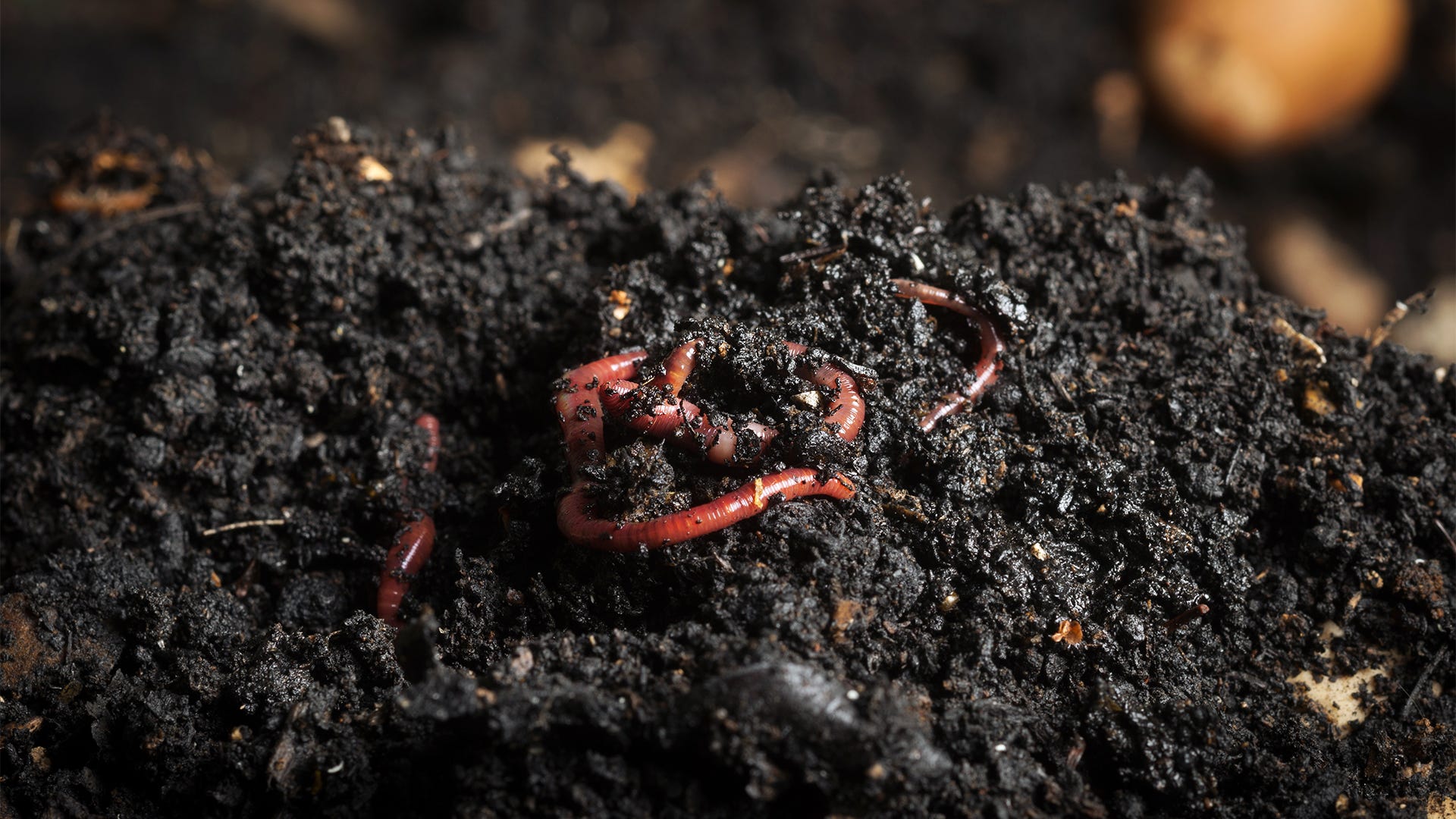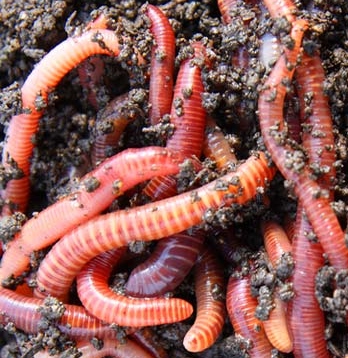Transform Your Waste with Red Wiggler Composting: A Total Newbie's Overview
Transform Your Waste with Red Wiggler Composting: A Total Newbie's Overview
Blog Article
Using the Power of Red Wiggler Composting: A Comprehensive Take A Look At the Environmental and Agricultural Benefits of This All-natural Waste Reduction Technique
The technique of red wiggler composting represents an engaging intersection of environmental stewardship and farming innovation, using a sustainable option to the expanding challenges of waste monitoring and soil deterioration. Via the natural process of vermicomposting, natural waste is transformed into a beneficial resource that not just enhances dirt yet also adds to a significant reduction in garbage dump payments and greenhouse gas discharges. As we discover the multifaceted benefits of this technique, we discover just how it can reshape agricultural methods and advertise ecological understanding, motivating a more detailed examination of its prospective influence on our areas and ecosystems.
What Are Red Wiggler Worms?
Red wiggler worms, scientifically understood as Eisenia fetida, are a types of earthworm particularly adjusted for composting and natural waste malfunction. These worms grow in the nutrient-rich setting of disintegrating natural matter, making them optimal for vermicomposting systems. Expanding to a length of around 3 to 4 inches, red wigglers are defined by their reddish-brown pigmentation and unique banding patterns along their bodies.
Unlike other earthworm types, red wigglers choose to live in the upper layers of dirt and natural particles, where oxygen degrees are higher and food sources are bountiful. Their physical adjustments enable them to process organic products effectively; they possess a well-developed digestive system that enables them to convert waste right into nutrient-rich spreadings, commonly described as "black gold" in gardening and farming contexts.
Eisenia fetida plays a crucial role in the community by helping with the decomposition procedure, improving soil framework, and promoting microbial task. Provided their distinct attributes and environmental importance, red wiggler worms have actually ended up being a main element in sustainable waste monitoring practices and organic horticulture efforts, adding substantially to environmental health and wellness.
Benefits for Dirt Health
The addition of red wiggler worms in composting systems uses substantial benefits for soil health. These worms play a vital duty in the decay procedure, damaging down natural issue right into nutrient-rich vermicompost. This natural fertilizer enhances soil water, aeration, and structure retention, adding to a more favorable environment for plant growth.
Vermicompost is rich in important nutrients such as potassium, phosphorus, and nitrogen, which are vital for plant development (Red Wiggler Composting). The presence of beneficial bacteria in vermicompost additionally promotes soil health by boosting vitamins and mineral accessibility and reducing soil-borne microorganisms. This dynamic communication cultivates a robust soil ecosystem that sustains sustainable agricultural techniques
In addition, red wigglers promote the formation of humus, a stable raw material that enhances dirt fertility and durability. This enhanced natural web content not just improves dirt structure but likewise enhances its capacity to sequester carbon, mitigating climate change effects.
Incorporating red wiggler composting right into agricultural systems can, consequently, result in much healthier soils, greater plant yields, and boosted sustainability. As a result, welcoming this natural waste decrease method can produce extensive benefits for both the setting and agricultural performance.
Influence On Waste Decrease
Integrating red wiggler worms right into composting systems substantially reduces waste, transforming organic products that would certainly otherwise add to land fills into useful garden compost. This method, referred to as vermicomposting, efficiently refines kitchen scraps, backyard waste, and various other biodegradable products, resulting in a considerable reduction in the quantity of waste sent to garbage dumps. According to the Environmental Defense Agency, organic waste makes up a substantial portion of garbage dump materials, creating hazardous greenhouse gases as it disintegrates anaerobically.
By making use of red wigglers, a very efficient composting agent, companies and families can draw away a significant quantity of natural waste from these garbage dumps. Each extra pound of red wigglers can process and consume about half a pound of organic waste daily, leading to an amazing reduction in overall waste generation.
Moreover, the application of vermicomposting supports regional waste management efforts and promotes a circular economic climate, where waste is transformed right into a source. As areas progressively embrace this practice, the collective effect on waste reduction becomes evident, cultivating a more sustainable environment and encouraging responsible waste administration methods. Welcoming red wiggler composting not only reduces waste issues but additionally improves community recognition concerning sustainable living.
Enhancing Agricultural Practices
Making use of red wiggler worms in farming techniques can dramatically improve soil wellness and plant performance. These worms play a vital function in the composting procedure, damaging down raw material right into nutrient-rich vermicompost. This all-natural fertilizer boosts soil structure, oygenation, and water retention, which are important for robust plant development.
Additionally, the spreadings produced by red wigglers are abundant in important nutrients, such as nitrogen, phosphorus, and potassium, promoting much healthier crops with higher returns. The microbial task stimulated by these worms likewise adds to a flourishing dirt ecosystem, enhancing biodiversity and strength against bugs and diseases.

Furthermore, the use of vermicompost can improve dirt pH levels, making nutrients more obtainable to plants. Red Wiggler Composting. discover here Therefore, farmers can cultivate much healthier crops while all at once contributing to dirt preservation efforts, ultimately producing a more lasting agricultural future
Obtaining Started With Composting
The main ingredient in red wiggler composting is organic waste, which can consist of cooking area scraps, yard waste, and paper products. This equilibrium cultivates an optimal atmosphere for red wigglers, which are the crucial organisms in this composting technique.
Picking an appropriate composting system is similarly crucial. Worm containers can be designed for indoor or outside usage, and they should offer appropriate water drainage and oygenation. It is advised to begin with a handful of worms-- around one extra pound of red wigglers for every single one extra pound of waste generated weekly.

Conclusion

The method of red wiggler composting stands for an engaging pop over to these guys junction of environmental stewardship and agricultural development, using a lasting solution to the growing obstacles of waste monitoring and dirt degradation.Furthermore, the application of vermicomposting supports regional waste administration initiatives and advertises a round economic situation, in which waste is changed right into a source. As communities increasingly adopt this practice, the cumulative effect on waste reduction becomes evident, fostering a more lasting setting and motivating liable waste monitoring methods. The key active ingredient in red wiggler composting is natural waste, which can consist of kitchen area scraps, yard waste, and paper products.In recap, red wiggler composting offers a lasting service for organic waste management, generating nutrient-rich vermicompost that dramatically improves soil health.
Report this page